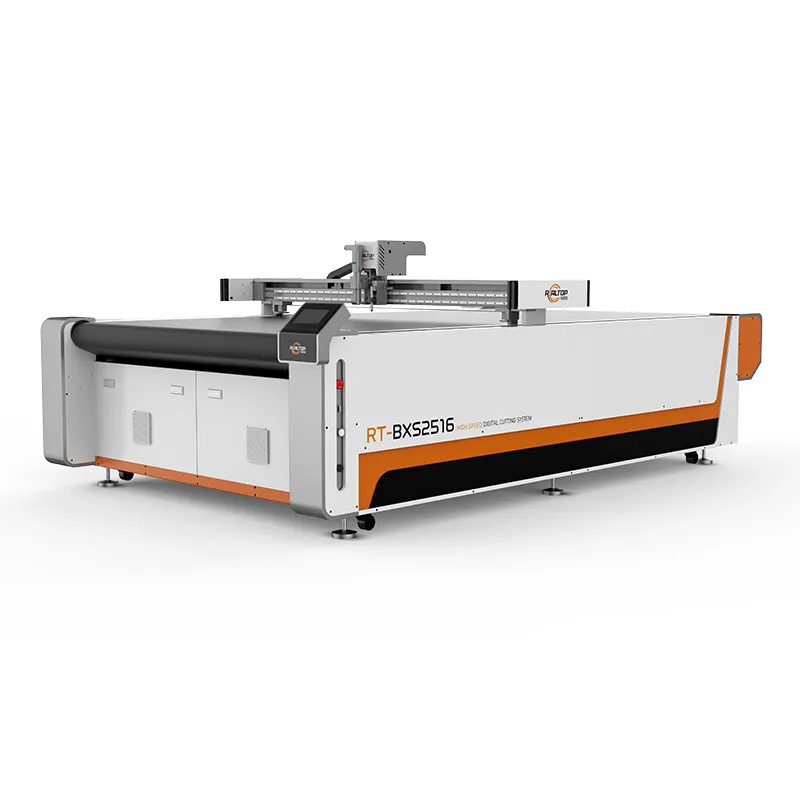Understanding Material Compatibility in Modern Gasket Fabrication
The effectiveness of gasket cutting machines largely depends on their ability to process various materials with precision and consistency. These sophisticated pieces of equipment have revolutionized the gasket manufacturing industry by offering versatility in material processing while maintaining exceptional quality standards. Today's gasket cutting machines can handle an impressive range of materials, each suited for specific applications and industrial requirements.
The selection of appropriate materials for gasket cutting machines is crucial as it directly impacts the final product's performance, durability, and ability to meet specific sealing requirements. Understanding material compatibility helps manufacturers optimize their production processes and ensure the delivery of high-quality gaskets that meet industry standards.
Traditional Gasket Materials and Their Properties
Rubber-Based Materials
Rubber compounds remain among the most widely used materials in gasket cutting machines. Natural rubber, EPDM, nitrile, and silicone rubber offer excellent flexibility and resistance to various environmental conditions. These materials are particularly well-suited for gasket cutting machines due to their consistent density and smooth cutting characteristics.
Modern gasket cutting machines excel at processing rubber materials of varying hardness levels, from soft compounds to harder durometer ratings. The precision of these machines ensures clean cuts without material deformation, which is essential for maintaining the integrity of rubber gaskets.
Fiber-Based Materials
Compressed fiber materials, including aramid fibers and cellulose, represent another category of materials perfectly suited for gasket cutting machines. These materials offer excellent temperature resistance and mechanical strength, making them ideal for industrial applications. The advanced cutting technology in modern machines can handle the dense structure of fiber-based materials without causing fraying or delamination.
The compatibility of fiber-based materials with gasket cutting machines has improved significantly with the introduction of specialized cutting tools and optimized cutting parameters. This advancement has enabled manufacturers to produce intricate gasket designs while maintaining material integrity.
Advanced Synthetic Materials for Modern Applications
High-Performance Polymers
PTFE, PEEK, and other high-performance polymers have become increasingly popular in gasket applications due to their exceptional chemical resistance and temperature stability. Gasket cutting machines equipped with proper tooling can process these materials with remarkable precision, creating complex geometries while maintaining tight tolerances.
The ability of modern gasket cutting machines to handle these advanced materials has opened new possibilities in industries such as chemical processing, pharmaceutical manufacturing, and aerospace applications. The machines' precision ensures consistent material removal without heat-induced deformation, which is crucial for maintaining the inherent properties of these high-value materials.
Composite Materials
Contemporary gasket cutting machines excel at processing composite materials that combine multiple layers or properties. These materials might include reinforced graphite, metal-inserted composites, or multi-layer polymer combinations. The sophisticated cutting capabilities of modern machines ensure clean edges without delamination or separation between layers.
The processing of composite materials requires specific expertise in machine parameter settings and tool selection. Advanced gasket cutting machines offer programmable cutting speeds and pressure adjustments to accommodate the unique characteristics of various composite structures.
Metal-Based Gasket Materials
Soft Metals
Aluminum, copper, and lead-based materials remain important in specific gasket applications. Modern gasket cutting machines can process these soft metals efficiently, creating precise cuts without burrs or material distortion. The machines' ability to handle metal materials has expanded the possibilities for creating custom metallic gaskets for specialized applications.
The processing of soft metals requires careful control of cutting parameters to prevent material deformation and ensure clean edges. Advanced gasket cutting machines incorporate features such as controlled feed rates and specialized cutting tools to optimize the processing of metallic materials.
Metal-Reinforced Materials
Materials combining metal cores or reinforcements with other compounds present unique challenges in gasket cutting. However, contemporary machines are well-equipped to handle these complex materials, maintaining the integrity of both the metal and non-metal components during the cutting process.
The precision control offered by modern gasket cutting machines ensures consistent processing of metal-reinforced materials, resulting in gaskets that maintain their structural integrity and sealing properties. This capability has become increasingly important in applications requiring both mechanical strength and sealing performance.
Emerging Materials and Future Trends
Sustainable Materials
The industry is witnessing a growing trend toward environmentally friendly gasket materials. Modern gasket cutting machines are being adapted to process recycled compounds, bio-based materials, and other sustainable alternatives. These machines maintain their high precision and efficiency while working with these innovative materials.
As sustainability becomes increasingly important, manufacturers are developing new materials that combine environmental responsibility with performance. Gasket cutting machines continue to evolve to accommodate these new materials while maintaining the high standards required in gasket manufacturing.
Smart Materials
The emergence of smart materials with embedded sensors or reactive properties presents new opportunities and challenges for gasket cutting machines. These advanced materials require precise processing to maintain their functional properties while achieving the desired gasket geometry.
Modern gasket cutting machines are being equipped with enhanced capabilities to handle these sophisticated materials, ensuring that their unique properties remain intact throughout the cutting process. This advancement is paving the way for the next generation of intelligent sealing solutions.
Frequently Asked Questions
What factors determine material suitability for gasket cutting machines?
Material suitability is determined by several factors including material hardness, thickness consistency, temperature sensitivity, and structural integrity. The material must be compatible with the cutting method employed by the machine and maintain its properties during and after the cutting process.
Can gasket cutting machines process multiple materials simultaneously?
Advanced gasket cutting machines can process multiple materials in sequence, though simultaneous cutting of different materials typically requires specialized setups. The machines can be programmed with different parameters for various materials to ensure optimal cutting performance.
How do temperature and humidity affect material processing in gasket cutting?
Temperature and humidity can significantly impact material behavior during cutting. Most modern gasket cutting machines include environmental control features to maintain optimal conditions for consistent material processing. This helps ensure quality and repeatability in gasket production regardless of ambient conditions.
What maintenance is required when switching between different materials?
When switching between materials, it's important to clean the cutting surface and tools, adjust machine parameters, and verify alignment. Regular maintenance ensures optimal performance and prevents cross-contamination between different materials, maintaining the quality of the final products.
 EN
EN
 AR
AR
 FR
FR
 DE
DE
 IT
IT
 KO
KO
 PT
PT
 RU
RU
 ES
ES



